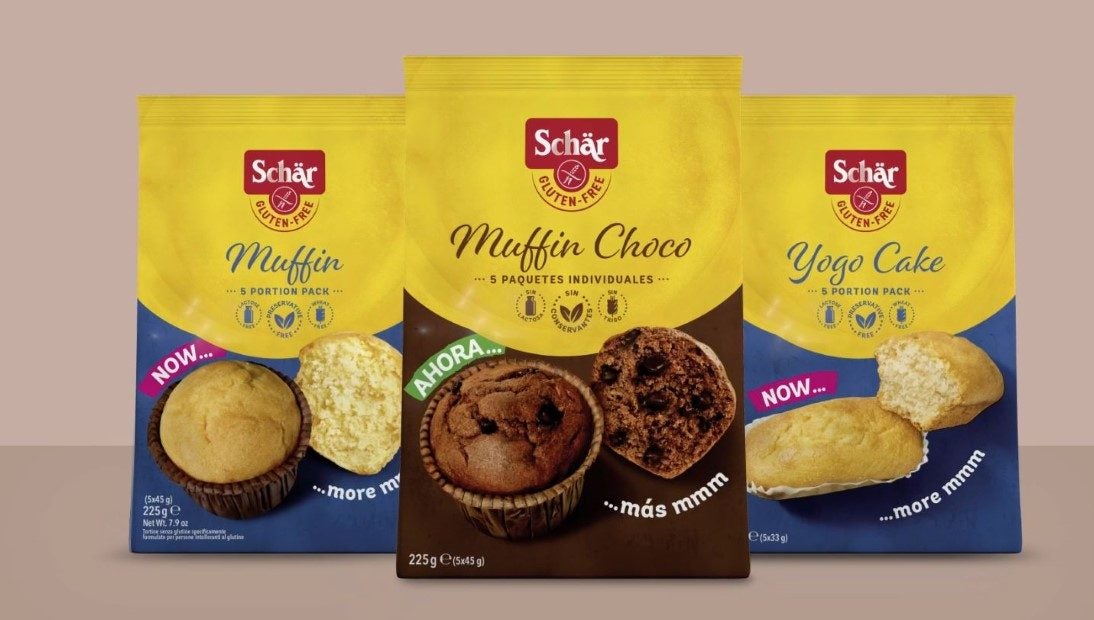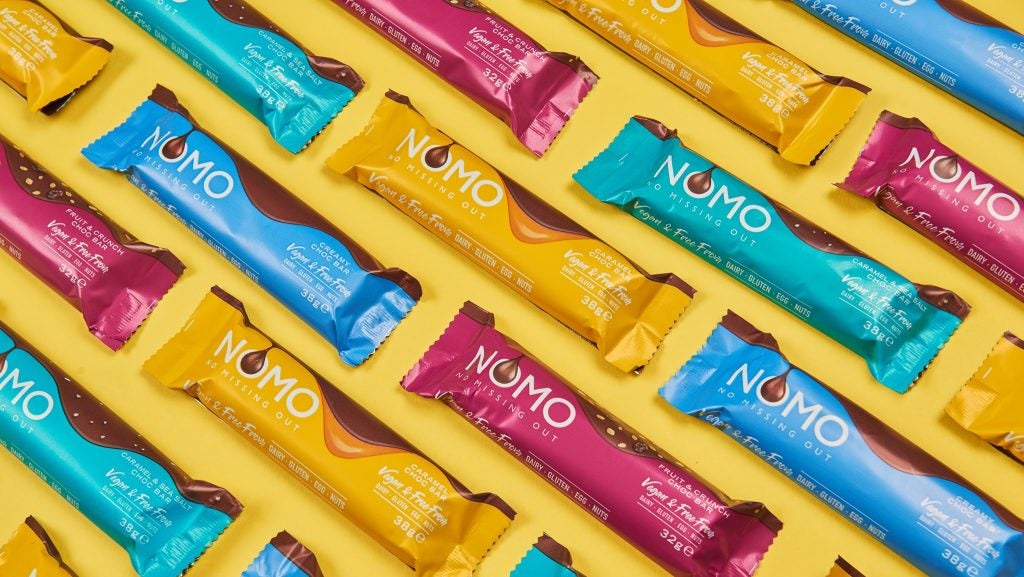
What was previously seen as a fairly niche allergen-free food category in the UK has become tangled up with a larger elected free-from offering.
The question is whether it is an obvious thing to do to lump all these products together as the enlarged category grows or whether it is causing confusion for UK retailers and consumers.
Moroever, as is often the case with rapid category expansion, is there something faddish about some elements of the market that will result in consolidation?
At its purest, allergen-free foods are products tailored to cater to people
whose immune system reacts to specific foods and who need to avoid them.
EU labelling rules and the UK
People typically suffer from allergies to nuts, shellfish and certain fruits.
Added to these, and often lumped in together, are food intolerances where people have difficulty digesting certain substances, such as gluten or wheat.
Currently, manufacturers of food sold in the EU must label 14 allergens under EU law. These include cereals containing gluten, milk, eggs, nuts, peanuts and soybeans.
Access the most comprehensive Company Profiles
on the market, powered by GlobalData. Save hours of research. Gain competitive edge.

Company Profile – free
sample
Your download email will arrive shortly
We are confident about the
unique
quality of our Company Profiles. However, we want you to make the most
beneficial
decision for your business, so we offer a free sample that you can download by
submitting the below form
By GlobalData
The UK is no longer a member of the EU but manufacturers there tend to follow the same guidelines.
Increasingly, allergen-free foods are branded as free-from, a category which some market watchers say – and circumstantial evidence suggests – bumps into choice-driven products such as plant-based ranges aimed at vegetarians and vegans or at people who simply want to cut down on certain food groups.
Such products can also be linked to a more modern trend of consumers trying to avoid ultra-processed foods.
Additionally, where do products that have removed salt or sugar, for example, sit?
Supermarket spread
However you categorise them, food products with ingredients removed now spread around the supermarket, usually with a dedicated allergen-free/free-from shelf-stable section but also moving into the bakery, snacking and the chilled and frozen sections.
Manufacturers may be pure-play specialists, big food companies believing there is potential in the area or the grocers themselves tapping into a growth story through private-label products.
And it is a growth story. One estimate suggests the UK gluten-free food products market alone will grow from $242.9m in 2023 to $477.6m by 2032, with a compound annual growth rate (CAGR) of 7.8%.
Coeliac UK, the charity for people need to live without gluten, estimates there are 500,000 people in the country who have the condition and don’t yet realise it.
As for the wider free-from food and beverage category, Kantar WorldPanel’s research published earlier this year suggested it is now worth £3.9bn ($5.06bn) in the UK.
Allergen-free food’s specialists
The potential of what has become a rather sprawling category has not been lost on specialist providers such as allergen-free food firm Kirsty’s, based in the north of England.
Set up by Kirsty Henshaw in 2009, following a long search for free-from food options for her son after discovering he had several allergies, she told Just Food last month that demand has grown the category and more competitors have emerged, including private-label offerings from supermarkets.
Hence the need to constantly innovate, which has seen Kirsty’s move into allergen-free food-to-go.
A company that can take an even longer-term view of the category is Italy-headquartered Dr Schär, which has been active in the UK market since 2002 and which is firmly focused on consumers with special dietary needs.
But with an eye on expansion, in 2022 it entered the bread category through the acquisition of allergen-free baker GDR Food Technology.
Increased competition
Declan Lockett, the managing director of Dr Schär’s business in the UK and Ireland, is aware of increased competition in the broader free-from space but believes “mission-led” businesses like his have an advantage.
“Over the years, with a spike ten years ago, many players in the conventional food industry thought to try the adventure of gluten-free and free-from, inflating the market for a time. Today, the market is undoubtedly manned by more manufacturers and we can speak of an industry that has achieved some stability,” he says.
“Our projection would be that the market will continue to grow mid-single digit in value and volume.”
On staying ahead of the competition, he says: “The experience of many years in the market has enabled us to build a comprehensive product portfolio that does not neglect regional and seasonal needs and is designed for all consumption occasions.”
The Covid factor
One theory behind the increased demand for free-from products is the Covid-19 pandemic led to consumers focusing more closely on what they put in their bodies.
“What we found in recent years is that the pandemic has certainly led more people to ask questions about the food they ingest. People are, quite rightly, trying to inform themselves and eat better,” Lockett says.
Food industry analyst Clive Black, a director at UK investment company Shore Capital, also notes an almost generational change in people’s attitude towards, and penchant for, products with the ‘nasties’ taken out.
He does, however, remain sceptical about some of the products’ bona fides. “We do have a more sick and worried society today. Some of these things didn’t seem to exist two generations ago. Now it seems to be inflicting a large part of the population,” Black says. “I do have genuine concern about the substance and the reality of this.
“There are people who are intolerant but it’s probably not the majority of society. There are countless stories in the press about which foods will harm you and that’s partly why consumers are concerned.”
Fashion or fear?
Another seasoned UK food market watcher, Hamish Renton, managing director at food and drink consultancy HRA Global, prefers to see the growth in this area as resulting from fashion rather than fear.
“I’m not buying into the link with Covid. I don’t see that. This is an area that started many decades ago,” he says. “Food is a fashion industry and things come in and out.”
What is in no doubt is that consumer interest in allergen-free food has led to a plethora of new entrants.
“In the last few years, private-labels have gone down the path of food products, providing a little bit of everything in terms of categories and both within the conventional and the wide range of free-from,” Lockett at Dr Schär says.
“We welcome competition from mainstream and specialist brands, as well as private labels, because it pushes us to continue to innovate and raise quality standards. This translates into a consumer benefit when they see increased product offerings and availability.”
Free-from chocolate’s growth
One of the young (ish) guns in this field is Nomo, a vegan and free-from chocolate maker, ultimately owned by German food group Zertus. Its products are suitable for sufferers of dairy, egg, gluten, peanut and tree nut allergies.
Senior brand manager Tara Stevens says: “We launched Nomo in 2019 as we recognised a gap in the market for a delicious tasting free-from and vegan chocolate” but she stresses “our chocolate is for everyone, regardless of your dietary requirements”.
The brand has gained traction with the country’s big grocers.“Buyers in the major supermarkets recognise the consumer need and how our brand caters to all across key consumption occasions which is why we quickly gained listings,” Stevens says.

She is also very aware of how competitive this category has become. “Since we launched the free-from market has grown massively. In the last two years free-from chocolate has grown 28% and Nomo has grown 63%,” she says.
“Demand for free-from products is increasing due to the number of people that are vegan or have a food allergy or intolerance growing. Further growth is being driven by groups of conscious consumers who are looking to reduce their intake of animal products due to multiple factors which could include health, environmental or animal welfare concerns.
“We foresee the growth continuing. The free-from chocolate market is expected to grow 15-20% each year based on what has happened in the last five years.”
The outlook
Can the growth levels predicted really be achieved or will consumers become jaded by, and ultimately put off by, all of the claims?
Black at Shore Capital says: “The allergen-free industry is on the march and it feels a bit like the wild west.
“I think we will see the products with substance holding their position but the others will fade away and there will be a shelf allocation retraction.
“It reminds me of alt-protein. Alt-protein is a massive shot across the bow here. I wouldn’t say no major companies will make an investment in this area but my scepticism is they will be reminded of the alt-protein bubble of the amount spent on tosh.”
Black remains sceptical about some of the claims made for some allergen-free foods, whether it be stuff taken out or stuff added in.
“The reality is there may be some products that have got authenticity but it’s a scammers’ heaven.”
Renton at HRA Global has sympathy for retailers and consumers having to pick apart the various claims across allergen-free and free-from.
“It’s a case of blurred boundaries that has caused a bit of confusion in the retail space,” he says.
“It started with wheat- and gluten-free and became dairy-free and was widened out by the EU to 14 allergens.
“But the whole thing has got merged with elected free-from. Most retailers have the core free-from brands, some aimed at coeliacs, and this is going along quite nicely. It is getting better nutritionals, better prices and better taste every year.
“But it has leaked out into other categories such as home baking and dairy
and there here is quite a lot of confusion about it amongst retailers and consumers.
“There is a degree of consumer scepticism of these claims.”

